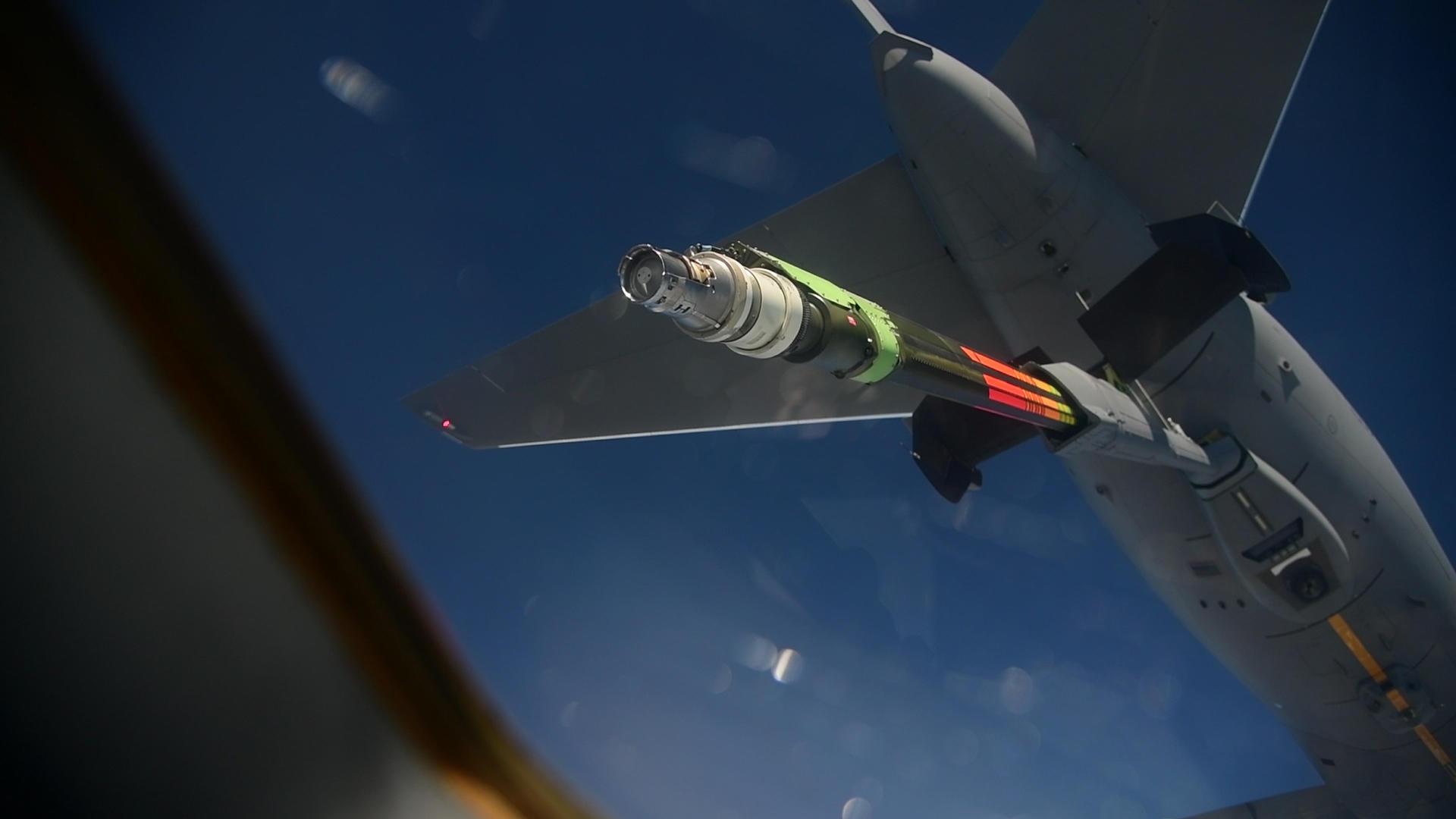
The U.S. Air Force and Boeing are finalizing a new schedule for installation of an improved Remote Vision System (RVS) on the KC-46A tanker following the critical design review (CDR) for the overhaul.
Additionally, a software-only update to the system has been implemented and is being installed as of mid-July, the service says.
The Air Force and Boeing on June 28-29 conducted the CDR for the required upgrade of the RVS—a full replacement of cameras, sensors and the boom operator’s work station in the 767-based refueler first announced in April 2020. The CDR followed an extended preliminary design review that included a dispute between the two sides on the need to install new panoramic cameras as part of the RVS.
The Air Force says in a statement that the RVS “2.0” design presented by Boeing at CDR “provides significant improvements over the current system, providing over 50% improvement in visual acuity.” While the actual performance of the new system will be assessed during test and evaluation, “results to date from the technology maturation plans, coupled with modeling and simulation analysis, give the USAF confidence in the design,” the service says.
The CDR has not officially closed yet, however. The Air Force and the OEM still need to agree on a new schedule for the installation, which had been set to begin in 2024. Additionally, the two sides need to close a plan for airworthiness certification for commercial-off-the-shelf (COTS) cameras, the Air Force says. The two sides agreed to work on the issues and a resolution is expected in the fall.
As part of the CDR, the Air Force and Boeing reached an agreement on replacing the panoramic cameras—three cameras separate from the boom system on the aircraft that are used to detect incoming receivers. The cameras as originally designed did not offer enough clarity for boom operators to detect aircraft at the required distance. The agreement is for the government to pay for the COTS cameras and Boeing to prepare the aircraft to connect them. Boeing will pay about $125 million for fiber-optic cables, conduits, software integration and other “nonrecurring engineering” costs as the Air Force determines what cameras will be used. The cameras, once selected, will become government-furnished equipment.
In June, a new issue with the aircraft came to light when Aviation Week reported that the interim software update to improve the acuity of the existing camera system, called the Enhanced Remote Vision System (ERVS), had been stalled for months because of “an erroneous fault under certain specific conditions.”
The Air Force said in an Aug. 7 statement that a fix has been implemented and that as of mid-July installations had resumed.
The KC-46 currently has a series of “Category One” deficiencies centered on its boom system, defined as problems that could impact the safety of flight. Most are expected to be resolved with the installation of RVS 2.0. A separate “stiff boom” issue, which prevents the KC-46 from being able to refuel slower aircraft such as the A-10, will requires a redesign of a telescoping actuator on the boom itself. This redesign also is coming at the government’s expense, with the design expected to be completed in 2024. The Air Force is determining how all of these upgrades will be conducted, with RVS, new panoramic cameras and the actuator redesign all expected within two to three years.
In the meantime, the Air Force has cleared the KC-46 for 97% of possible receiving aircraft under U.S. Transportation Command taskings. As of early June, the tanker has flown more than 3,000 operational missions, offloading 66 million lb. of fuel in more than 16,000 contacts with the boom and 1,000 contacts with the drogue.





